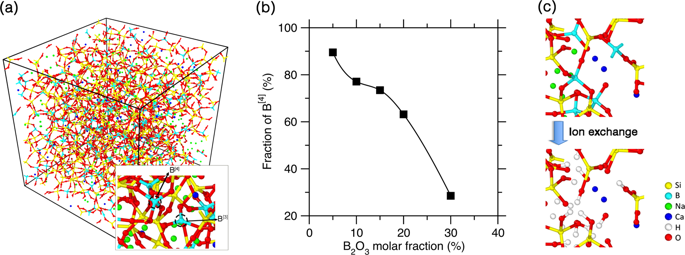npj Materials Degradation ( IF 6.6 ) Pub Date : 2019-02-07 , DOI: 10.1038/s41529-019-0070-9 Tao Du , Hui Li , Qi Zhou , Zhe Wang , Gaurav Sant , Joseph V. Ryan , Mathieu Bauchy

|
When exposed to water, silicate glasses and minerals can form a hydrated gel surface layer concurrent with a decrease in their dissolution kinetics—a phenomenon known as the “passivation effect.” However, the atomic-scale origin of such passivation remains debated. Here, based on reactive molecular dynamics simulations, we investigate the hydration of a series of modified borosilicate glasses with varying compositions. We show that, upon the aging of the gel, the passivation effect manifests itself as a drop in hydrogen mobility. Nevertheless, only select glass compositions are found to exhibit some passivation. Based on these results, we demonstrate that the passivation effect cannot be solely explained by the repolymerization of the hydrated gel upon aging. Rather, we establish that the propensity for passivation is intrinsically governed by the reorganization of the medium-range order structure of the gel upon aging and, specifically, the formation of small silicate rings that hinder water mobility.
中文翻译:

水合硅酸盐玻璃钝化效应的原子起源
当暴露于水时,硅酸盐玻璃和矿物质会形成水合的凝胶表面层,同时降低其溶解动力学,这种现象被称为“钝化效应”。但是,这种钝化的原子尺度起源尚有争议。在这里,基于反应性分子动力学模拟,我们研究了一系列具有不同成分的改性硼硅酸盐玻璃的水合作用。我们表明,随着凝胶的老化,钝化效果表现为氢迁移率的下降。然而,仅发现选择的玻璃组合物表现出一些钝化。基于这些结果,我们证明钝化效果不能仅通过老化时水合凝胶的再聚合来解释。相当,











































 京公网安备 11010802027423号
京公网安备 11010802027423号